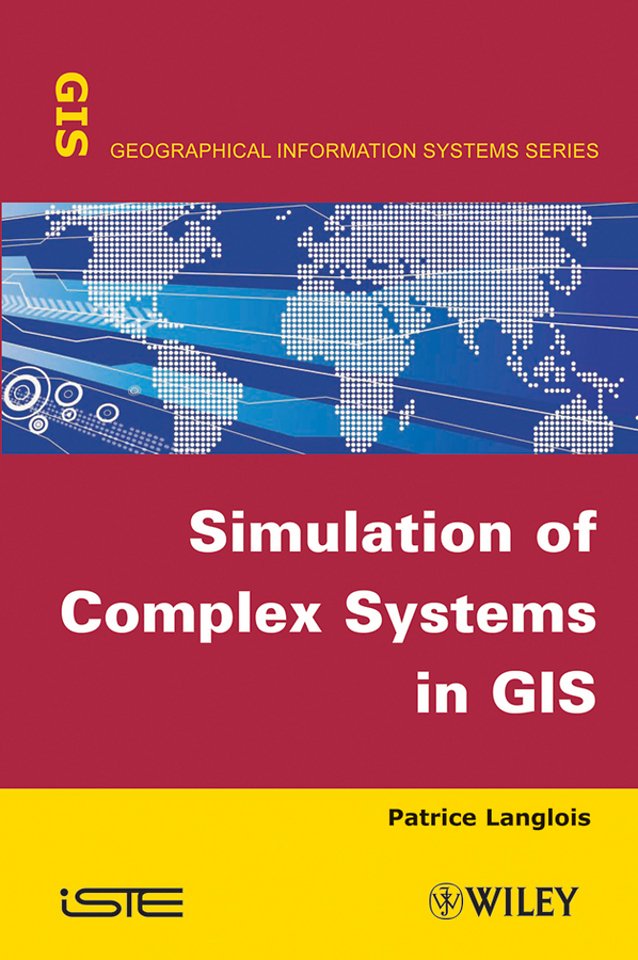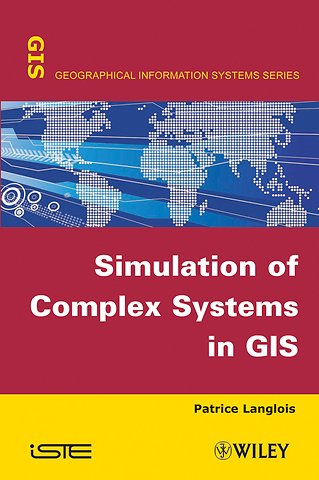Simulation of Complex Systems in GIS
Gebonden Engels 2010 9781848212237Samenvatting
This book provides a comprehensive view of geographical modeling. It first establishes the foundations of geographical modeling, covering such concepts as structure, organization, system, topologies, as well as the concept of time. Next, it tackles the use of computer tools for dynamic model building and presents several models applied to various themes, such as urban growth, natural risks, as well as political themes. Finally, a general model of the geographic agents system (GAS), which can be used as a basis for the construction of a model–building platform for dynamic spatial models is presented.
Specificaties
Lezersrecensies
Inhoudsopgave
<p>PART 1. THE STRUCTURE OF THE GEOGRAPHIC SPACE 1</p>
<p>Part 1. Introduction 3</p>
<p>Chapter 1. Structure and System Concepts 5</p>
<p>1.1. The notion of structure 5</p>
<p>1.2. The systemic paradigm 10</p>
<p>1.3. The notion of organization 13</p>
<p>Chapter 2. Space and Geometry 29</p>
<p>2.1. Different theories of space 29</p>
<p>2.2. Geometry and its data structures 43</p>
<p>2.3. Neat geometry and fuzzy geometry 60</p>
<p>Chapter 3. Topological Structures: How Objects are Organized in Spatial Systems 67</p>
<p>3.1. Topology 67</p>
<p>3.2. Metrics and topologies 68</p>
<p>3.3. Calculated topology, structural topology 71</p>
<p>3.4. Hierarchization 78</p>
<p>Chapter 4. Matter and Geographical Objects 79</p>
<p>4.1. Geographic matter 79</p>
<p>4.2. The notion of observation 82</p>
<p>4.3. The geographic object: Definitions and principles 84</p>
<p>Chapter 5. Time and Dynamics 97</p>
<p>5.1. Time 97</p>
<p>5.2. Temporalities 100</p>
<p>5.3. Events, processes 105</p>
<p>5.4. Decomposition of a complex process 115</p>
<p>5.5. An epistemic choice: reciprocal dependency between the complexity levels of a phenomenon 117</p>
<p>Chapter 6. Spatial Interaction 121</p>
<p>6.1. Presentation of the concept 121</p>
<p>6.2. Definition of macroscopic interaction 125</p>
<p>6.3. The four elementary (inter)actions 127</p>
<p>6.4. Microscopic interaction like a multigraph 128</p>
<p>6.5. Composition of successive interactions 130</p>
<p>6.6. The configurations and the trajectories of a simulation are categories 131</p>
<p>6.7. Intermediary level matrix representation 133</p>
<p>6.8. Examples of interactions 134</p>
<p>6.9. First definition of the notion of spatial system 138</p>
<p>Part 1. Conclusion: Stages of the Ontogenesis 141</p>
<p>PART 2. MODELING THROUGH CELLULAR AUTOMATA 145</p>
<p>Chapter 7. Concept and Formalization of a CA 147</p>
<p>7.1. Cellular automata paradigm 148</p>
<p>7.2. Notion of finite–state automata 150</p>
<p>7.3. Mealy and Moore automata 151</p>
<p>7.4. A simple example of CA: the game of life 152</p>
<p>7.5. Different decompositions of the functions of a cell 153</p>
<p>7.6. Threshold automaton, window automaton 155</p>
<p>7.7. Micro level and Stochastic automaton 156</p>
<p>7.8. Macro level and deterministic automaton 156</p>
<p>7.9. General definition of a geographic cellular automaton 157</p>
<p>7.10. Different scheduling regimes of the internal tasks of the system 160</p>
<p>7.11. Ports, channels, encapsulation 162</p>
<p>7.12. Interaction 164</p>
<p>7.13. Space associated with a geographic cellular automaton 168</p>
<p>7.14. Topology and neighborhood operator of a GCA 168</p>
<p>7.15. The notion of cellular layer 168</p>
<p>7.16. Hierarchized GCA models 169</p>
<p>Chapter 8. Examples of Geographic Cellular Automaton Models 171</p>
<p>8.1. SpaCelle, multi–layer cellular automaton 172</p>
<p>8.2. Example: the evolution model of the Rouen agglomeration 181</p>
<p>8.3. RuiCells 189</p>
<p>8.4. GeoCells 207</p>
<p>Part 2. Conclusion 235</p>
<p>PART 3. A GENERAL MODEL OF GEOGRAPHIC AGENT SYSTEMS 237</p>
<p>Part 3. Introduction 239</p>
<p>Chapter 9. Theoretical Approach of an Integrated Simulation Platform 241</p>
<p>9.1. For an integrated platform of simulation 241</p>
<p>9.2. General specifications 242</p>
<p>Chapter 10. A Formal Ontology of Geographic Agent Systems 245</p>
<p>10.1. The conceptual framework 245</p>
<p>10.2. The notion of a geographic agent system 247</p>
<p>10.3. A generalization of the notion of process 249</p>
<p>10.4. The notion of a geographic agent 250</p>
<p>10.5. The formalization of the notion of organization 258</p>
<p>10.6. The formalization of behavior 268</p>
<p>10.7. Formalization of a general AOC model 279</p>
<p>10.8. The Schelling model example 280</p>
<p>Part 3. Conclusion 283</p>
<p>General Conclusion 285</p>
<p>Acronyms 291</p>
<p>Bibliography 293</p>
<p>Index 299</p>
Rubrieken
- advisering
- algemeen management
- coaching en trainen
- communicatie en media
- economie
- financieel management
- inkoop en logistiek
- internet en social media
- it-management / ict
- juridisch
- leiderschap
- marketing
- mens en maatschappij
- non-profit
- ondernemen
- organisatiekunde
- personal finance
- personeelsmanagement
- persoonlijke effectiviteit
- projectmanagement
- psychologie
- reclame en verkoop
- strategisch management
- verandermanagement
- werk en loopbaan

